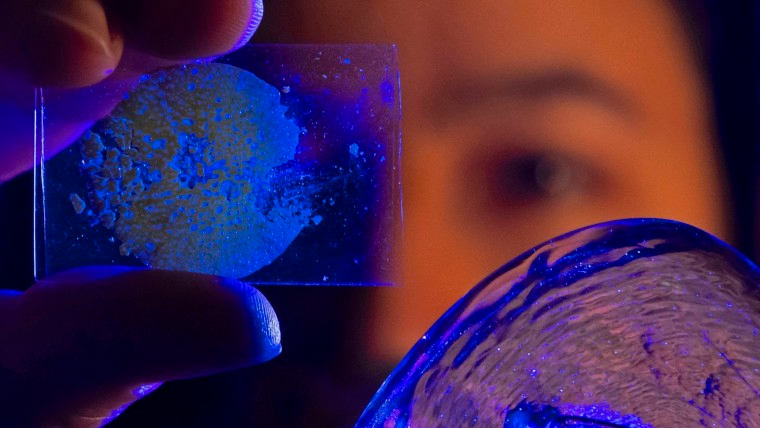Nov 17 2020
Bonds between organic and inorganic materials occur more commonly in nature, for example, in the building of bones and skeletal structures.
 Dr. Courtney Calahoo presents organic (l.) and inorganic glass (r.). Image Credit: Jens Meyer (University of Jena).
Dr. Courtney Calahoo presents organic (l.) and inorganic glass (r.). Image Credit: Jens Meyer (University of Jena).
They usually allow blends of properties that cannot be realized with just one kind of material. But in technological material development, these hybrid materials are still very difficult to achieve even now.
A New Class of Hybrid Glass Materials
At the Universities of Jena (Germany) and Cambridge (GB), scientists have now successfully made a new family of hybrid glass materials that integrate organic and inorganic components.
To execute this, the researchers used unique material combinations where chemical bonds between inorganic and organometallic glasses can be produced. They used materials formed of organometallic networks—so-called metal-organic frameworks (MOFs)—which have recently gained increased research interest.
This is mainly due to the fact that their framework structures can be made in a targeted way, from the length scale of separate molecules up to a few nanometers. This helps realize control over porosity, which could be adapted to a huge number of applications, both regarding the size of the pores and their permeability, as well as the chemical properties found on the pore surfaces.
For instance, segregating membranes or storage devices for liquids and gases, supports for catalysts, or new kinds of components for electrical energy storage devices can be developed.
The chemical design of MOF materials follows a modular principle, according to which inorganic nodes are connected to one another via organic molecules to form a three-dimensional network.
Louis Longley, University of Cambridge
Longley added, “This results in an almost infinite variety of possible structures. A few of these structures can be converted into a glassy state by heat treatment. While crystalline MOF materials are typically synthesized in powder form, the liquid and glass states open up a wide range of processing options and potential shapes.”
Best of Both Worlds Combined
The combination of such MOF-derived glasses with classic inorganic glass materials could make it possible to combine the best of both worlds.
Courtney Calahoo, Senior Scientist and Chair of Glass Chemistry, Friedrich Schiller University Jena
For instance, composite glasses of this type could result in considerably enhanced mechanical properties by integrating the impact and fracture toughness of plastics with the high rigidity and hardness of inorganic glasses.
The critical factor that ensures the materials involved are not just mixed with each other is the formation of a contact area inside which chemical bonds can form between the organometallic network and traditional glass.
Only in this way can really new properties be obtained, for example in electrical conductivity or mechanical resistance.
Lothar Wondraczek, Professor of Glass Chemistry, Friedrich Schiller University Jena
Journal Reference:
Longley, L., et al. (2020) Metal-organic framework and inorganic glass composites. Nature Communications. doi.org/10.1038/s41467-020-19598-9.